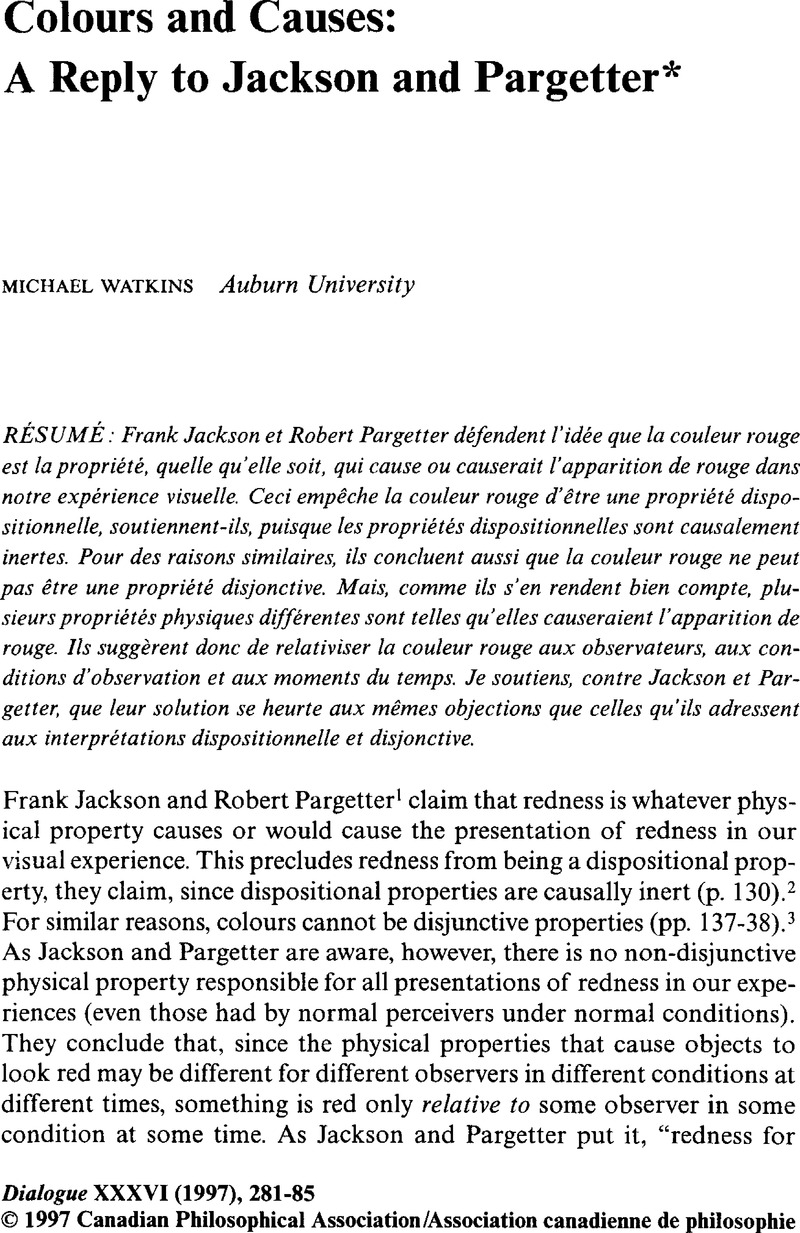Published online by Cambridge University Press: 13 April 2010

1 Jackson, Frank and Pargetter, Robert, “An Objectivist's Guide to Subjectivism About Colour,” Revue Internationale de Philosophie, 41 (1987): 127–41.Google Scholar
2 Dispositions are causally inert, according to Jackson and Pargetter, because there is nothing for dispositions to do. Assuming that there is a categorical ground for any object's disposition to look red, it is the categorical ground that causes the object to look red. To claim that an object looks red both because of its disposition to look red and because of the categorical ground of that disposition would commit us to a strange and systematic over-determination. For a detailed defence of their claim that dispositions are causally inert, see Prior, Elizabeth W., Pargetter, Robert, and Jackson, Frank, “Three Theses About Dispositions,” American Philosophical Quarterly, 19 (1982): 251–56Google Scholar. Note that I neither defend nor endorse the claim that dispositions are causally inert, but only report Jackson and Pargetter's motivations. The aim of this paper is only to show that Jackson and Pargetter fail to provide an account of colours that is adequate, given their desiderata.
3 Assume, for instance, that one object looks red because of the instantiation of property P, while another object looks red because of the instantiation of P*. Assume further, with Jackson and Pargetter, that redness is whatever physical property causes the presentation of redness in our visual experience. Then Jackson and Pargetter must deny that redness is the disjunctive property PvP* for the same reason they deny that redness is a dispositional property. If P is causally responsible for the first object's looking red, then PvP* can be the cause only if we are willing to allow that the appearance of an object's colour is systematically over-determined. If we are willing to allow that something's looking red can be systematically overdetermined, then Jackson and Pargetter have no argument against identifying redness with the disposition to look red.
4 Cf. Hardin, C. L., Colors for Philosophers (Indianapolis: Hackett Publishing Company, 1988), especially chap. 2.Google Scholar
5 I came to appreciate this problem during a conversation with Diana Raffman. Given the conversants, I suspect she first recognized it.
6 I defend a dispositional account of colours in “Dispositionalism, Ostension, and Austerity,” Philosophical Studies, 73 (1994): 55–86.CrossRefGoogle Scholar